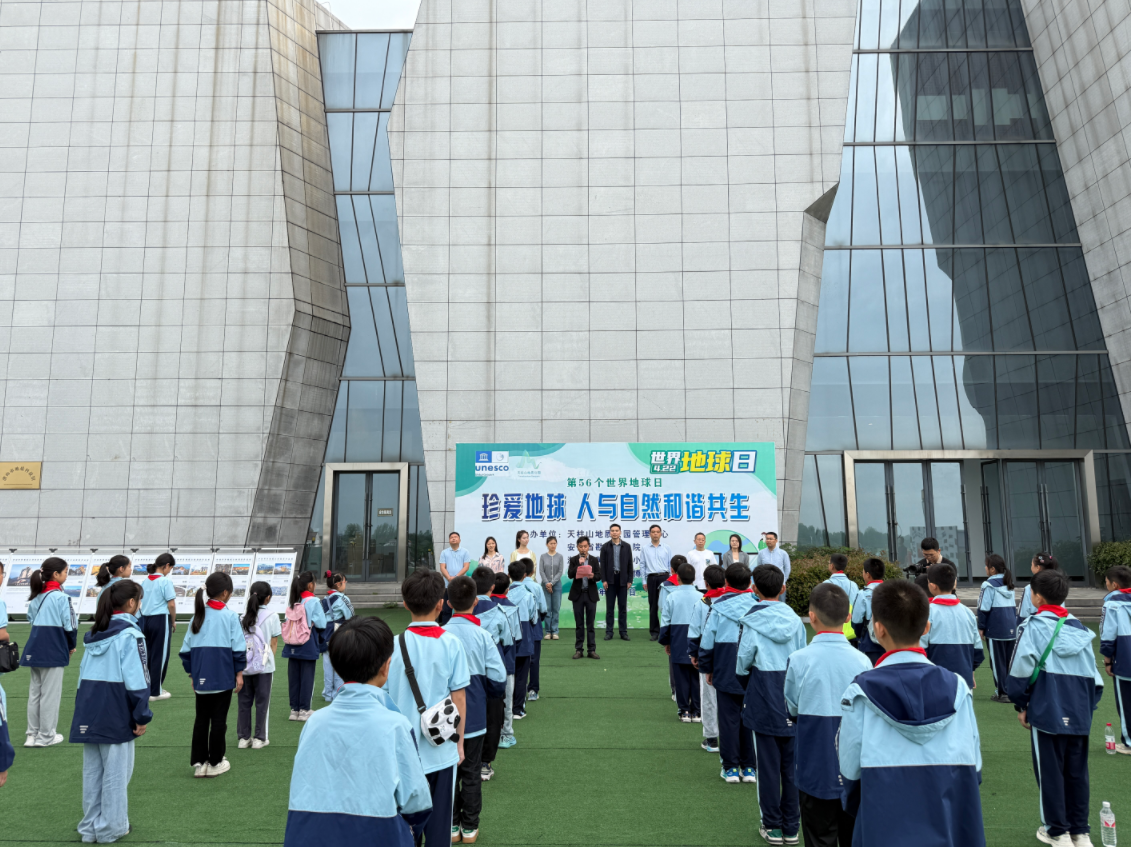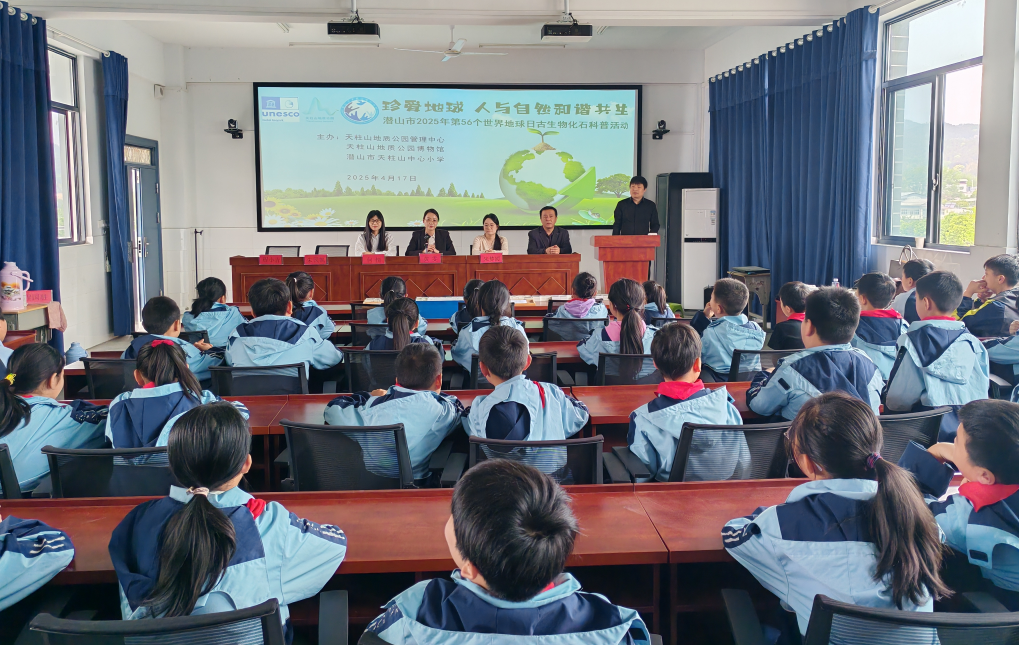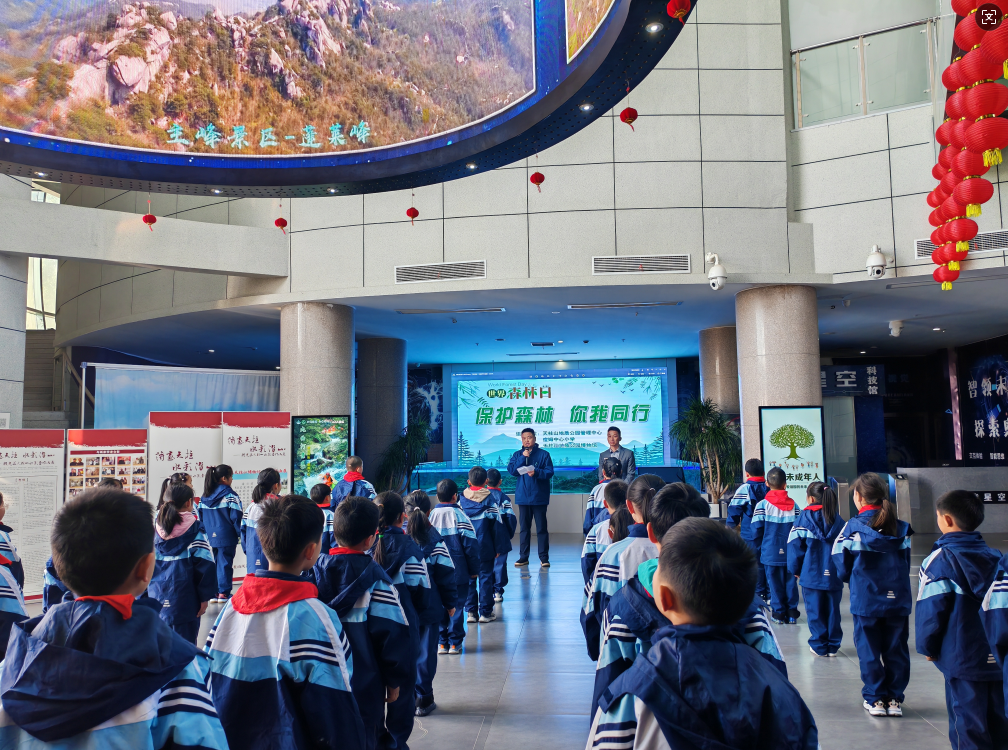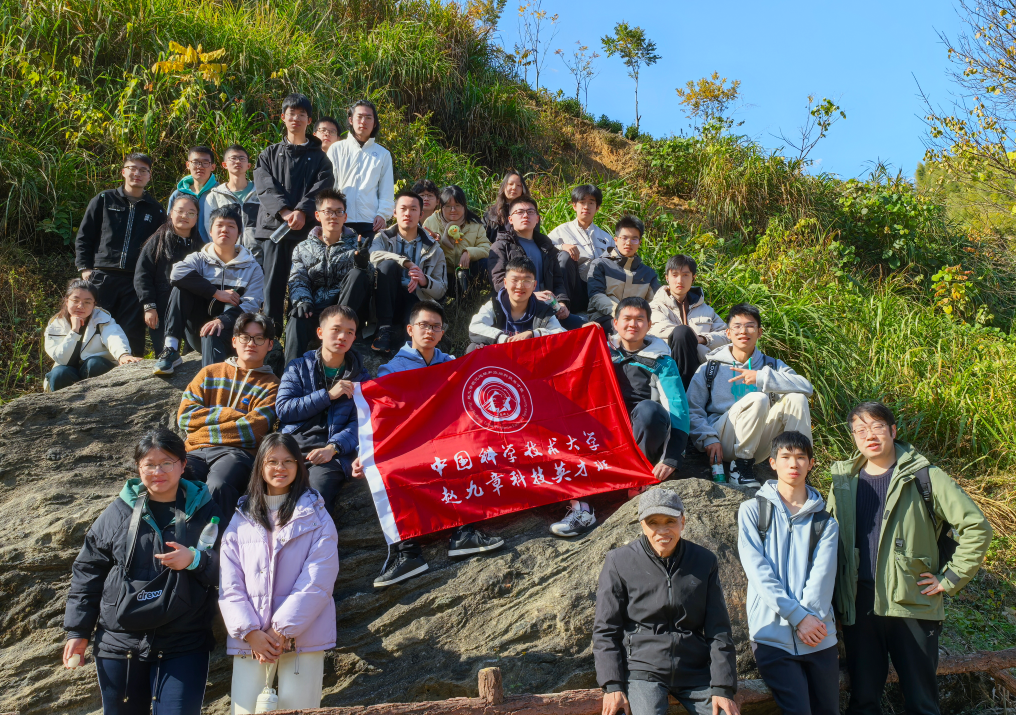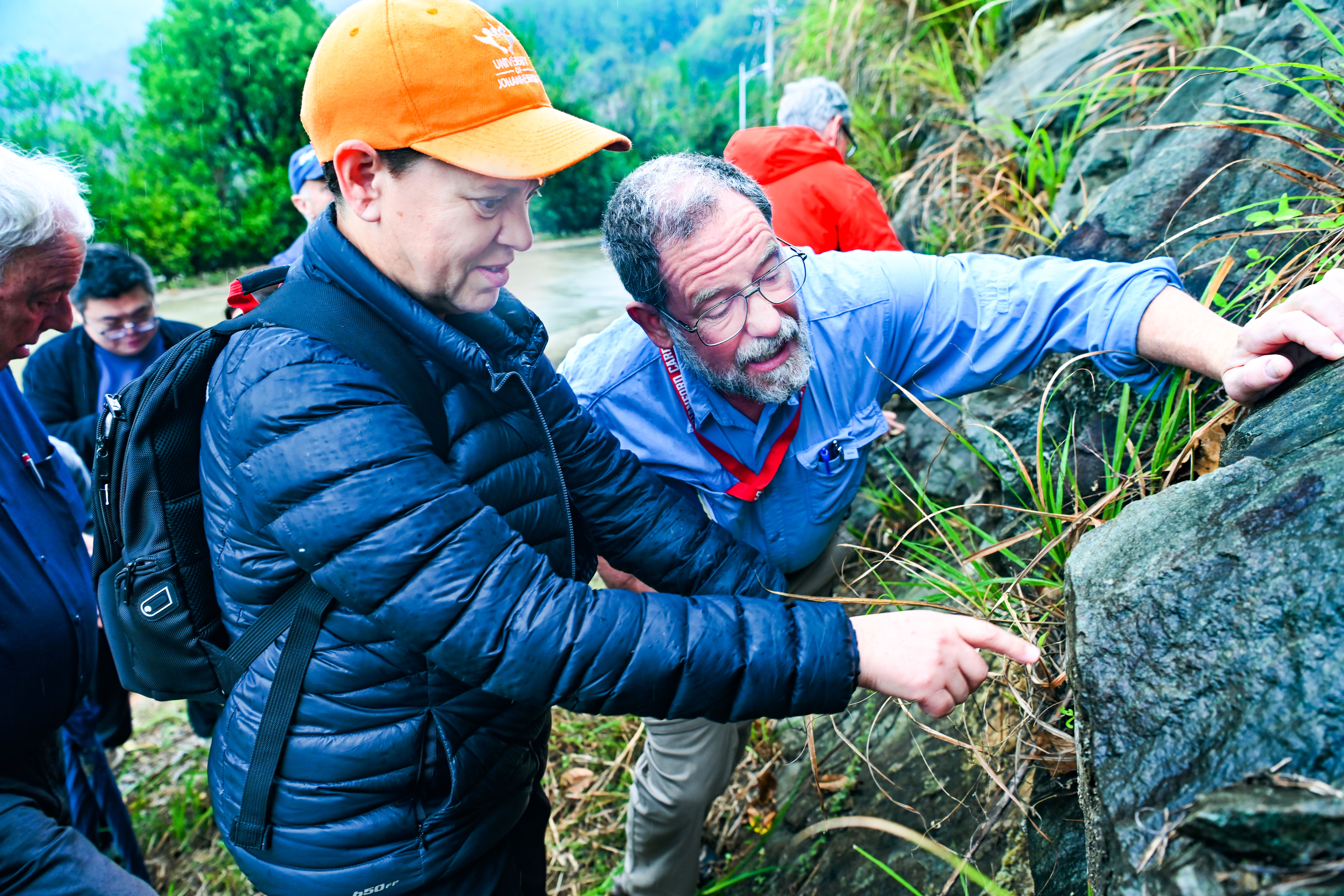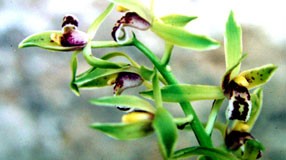
April 22, 2024 is the 55th World Earth Day, and the theme of this year's Earth Day is "Planet vs. Plastics". In order to thoroughly study and implement the spirit of the 20th National Congress of the Communist Party of China, publicize Xi Jinping Thought on Ecological Civilization, guide the whole society to establish the concept of ecological civilization of "respecting nature, conforming to nature, and protecting nature", promote the construction of beautiful Qianshan, and jointly build an earth home where man and nature coexist in harmony, Tianzhushan Global Geopark, Anqing Qianshan Ecological Environment Branch and Qianshan Pailou Central Primary School jointly carried out the 55th "World Earth Day" and the 5th Asia-Pacific Geopark Week Science Popularization Campaign. In the form of museum-school cooperation and joint construction and common benefit, Tianzhushan Geopark will give full play to the social education function of the museum and jointly build a "second classroom" for popular science education.
More
Details
The
mascot of the 2023 Spring Festival Gala of the China Central Radio and
Television Station, the image of Rabbit Yuanyuan with fluffy and plush shape,
lively and healing attitude, and large, layered eyes, is taken from the fossil Mimotona wana (about 60-62 million years
old) found by scientists from the Institute of Vertebrate and Paleoanthropology
of the Chinese Academy of Sciences (hereinafter referred to as the Institute of
Vertebrate Paleontology) in the southern part of Tianzhushan UNESCO Global
Geopark. The fossil Mimotona wana is an
ancestral species of Lagomorpha and suggests an important clue to a classic
scientific question in the study of Lagomorpha over the past 300 years.
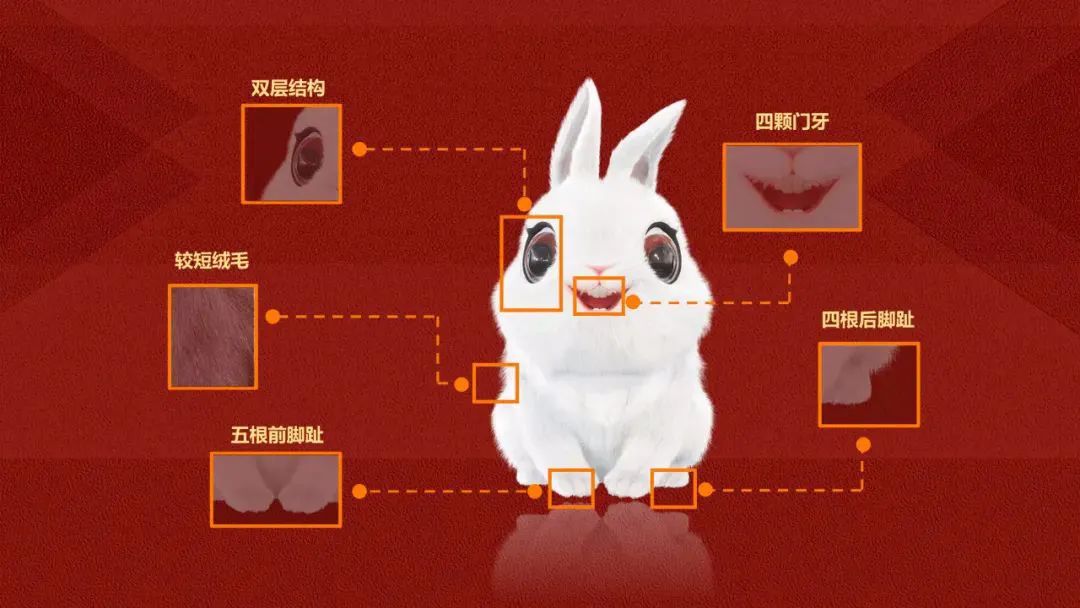
I.
The characteristics of rabbits
Whenever
we see rabbits, they always look busy and they are constantly chewing their
food all the time. This is because a rabbit's incisors grow constantly. If they
cannot grind their teeth sufficiently, the incisors will grow outwards rapidly
and the overgrown incisors will prevent the rabbit's lips from closing and
prevent them from eating properly, which can lead to death in serious cases.
For rabbits, they are grinding their teeth with their lives. And for
scientists, the pair of incisors is also quite important, a feature that
distinguishes rabbits from other mammals. However, among mammals with large
incisors that grow throughout their lives, apart from rabbits there are also
rats, so rabbits and rats have always been thought to be closely related.
.png)
As
early as 1735, the biologist Linnaeus, the founder of modern taxonomy, included
rabbits and rats together as rodents. It was not until 200 years later that
scientists began to point out the differences in the morphology of the incisors
of rabbits and rats, and that the Lagomorpha had a pair of small incisors
hidden near the large incisors in the upper jaw, which were clearly more
complex than those of rodents. Not only that, more and more scholars searched
for more differences between the two, turning to the suggestion that rabbits
and rats are not related to each other. This debate, which lasted nearly 100
years, led to one of the classic scientific questions in the history of rabbit
studies: where in the evolutionary history of life does the rabbit fit into the
great mammalian tree? The only way to find out how the rabbit originated and
whether it is related to rodents is to look for clues in fossils.
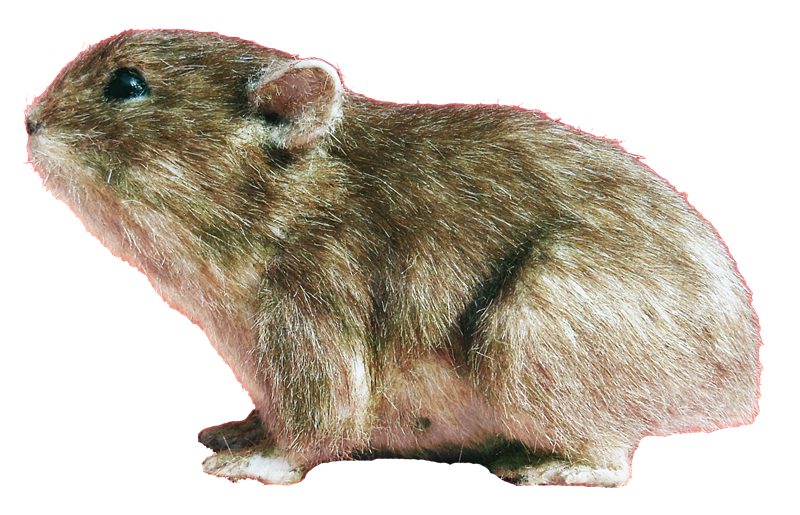
II.
The origin of rabbits
In
order to solve this centuries-old puzzle, paleontological predecessors have
visited many fossil strata around the world. Since the 1960s, the Chinese Academy
of Sciences (CAS) have organized a large-scale expedition to the "Red
Formation" in southern China and discovered a mammalian fauna unique to
Asia in the Paleocene strata, which provided an opportunity to explore the
origins of rodents and rabbits. In the 1970s, a field team from the Institute
of Vertebrate Paleontology discovered two important fossil skulls with large
incisors (Early Paleocene, about 60-62 million years ago) in Qianshan, Anhui
Province (the site of Tianzhushan UGGp). After research by Mr. Li Chuankui, a
paleomammalogist and researcher of the Institute of Vertebrate Paleontology in
China, the fossils were named Mimotona
wana and Heomys orientalis, which
are respectively the ancestral species of Lagomorpha and the ancestral species
of rodents, and they are proven to be of the same origin.
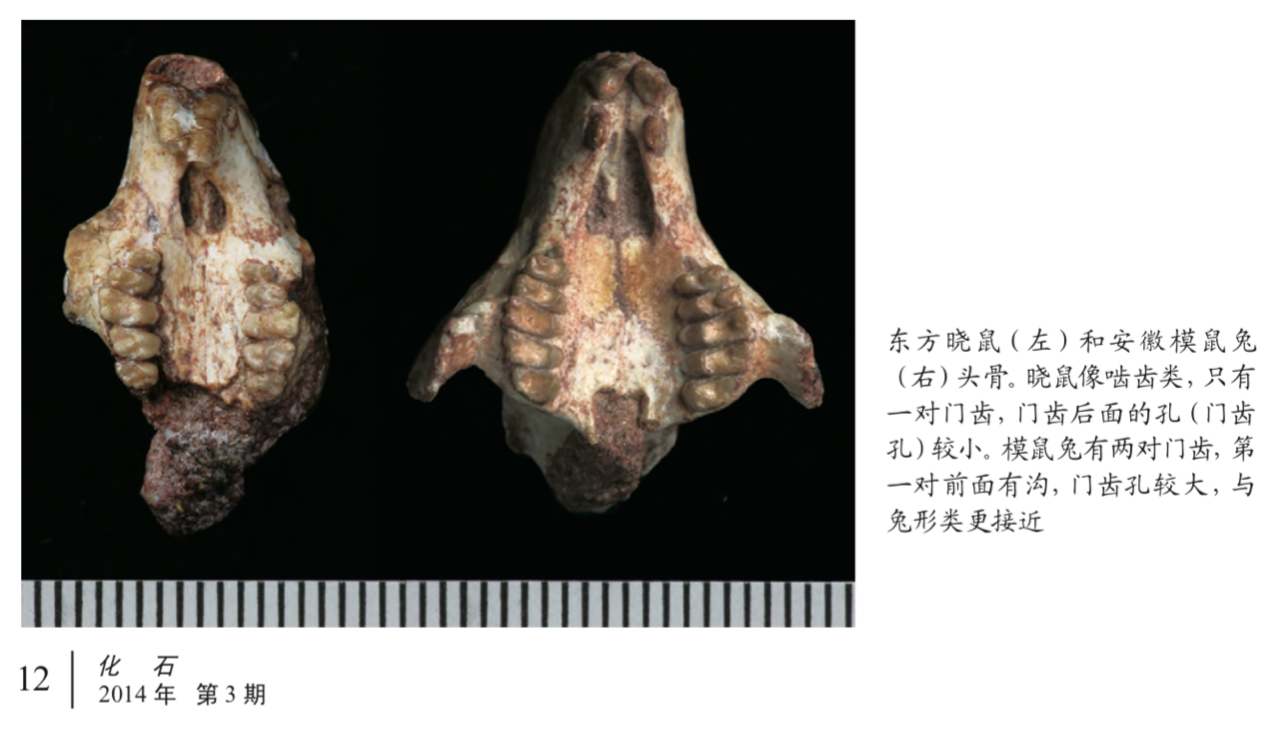
The
mascot Rabbit Yuanyuan not only embodies the meaning and beauty of the
traditional Chinese zodiac sign of the rabbit, but also shines a light on the
outstanding scientific achievements and the tenacity of Chinese scientists.
















